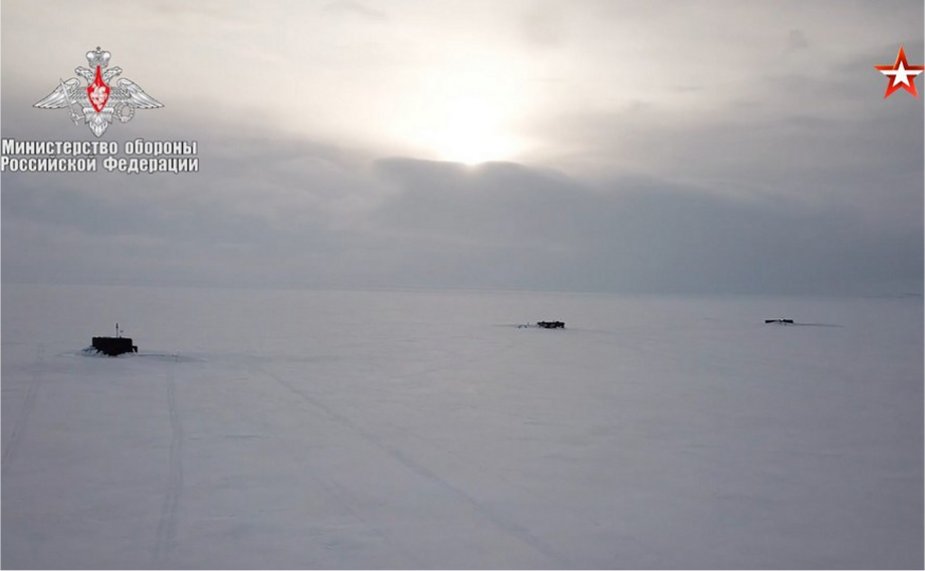According to information published by The Arctic Institute on April 11, 2023, the new Maritime Doctrine of the Russian Federation, released in July 2022, reveals Russia's ambitions to become a great maritime power and its recognition of the Arctic as the most important region for its strategic interests.
Follow Navy Recognition on Google News at this link
 Three Russian Navy submarines during Umka 2021. (Picture source: Russian MoD)
Three Russian Navy submarines during Umka 2021. (Picture source: Russian MoD)
With more than 50% of the Arctic coastline, Russia has been modernizing its military infrastructure in the region and aims to establish control over foreign naval activity in the Northern Sea Route.
The region's significant energy and oil reserves have drawn non-Arctic states like China and India to the game, with China focusing on developing its Polar Silk Road along the Arctic coast.
The new doctrine defines NATO and the United States as the main threats to Russia's security and emphasizes the need to reinforce combat capabilities of the Northern and Pacific Fleets in the Arctic Zone.
However, it remains unclear whether Russia has the capacity to achieve its objectives, especially given its economic difficulties and the strains of the war in Ukraine.
The alliance and its Arctic members may need to increase their regional awareness and military presence to deter potential aggression from Moscow. The expansion of Russia's Northern Fleet and icebreaker fleet, along with its modernization efforts, suggest that increased military activity throughout the High North is likely in the coming years.
However, there are two main obstacles to achieving a NATO-increased maritime presence throughout the region: Russian military superiority and the limited presence of allied navies.
Norway, an advocate for further involvement of the alliance in the region, is expected to keep a combination of deterrence and détente as its security policy towards the region. Other NATO allies, including the United Kingdom and Germany, are also increasingly investing more and turning their sights to the High North.
The recent US National Strategy for the Arctic Region identifies four main pillars of work in its Arctic activity: Security, Climate Change and Environmental Protection, Sustainable Economic Development, and International Cooperation and Governance.
Regarding the security dimension, the strategy clearly states their intentions to enhance and exercise both military and civilian capabilities in the Arctic to deter threats.
With Russia's new Maritime Doctrine, it is clear that Moscow has unmistakable intentions towards the Arctic region and its natural resources. Achieving an adequate level of strategic awareness will become a crucial goal.
More involvement in the Arctic region by NATO allies will be necessary to counter Russian ambitions and have an enhanced strategic awareness in the region.
However, such involvement must increase in a way that doesn't lead to a rise in geostrategic tensions. It remains to be seen how realistic Russia's new doctrine is and how much energy NATO is willing to devote to the stability of the High North.



